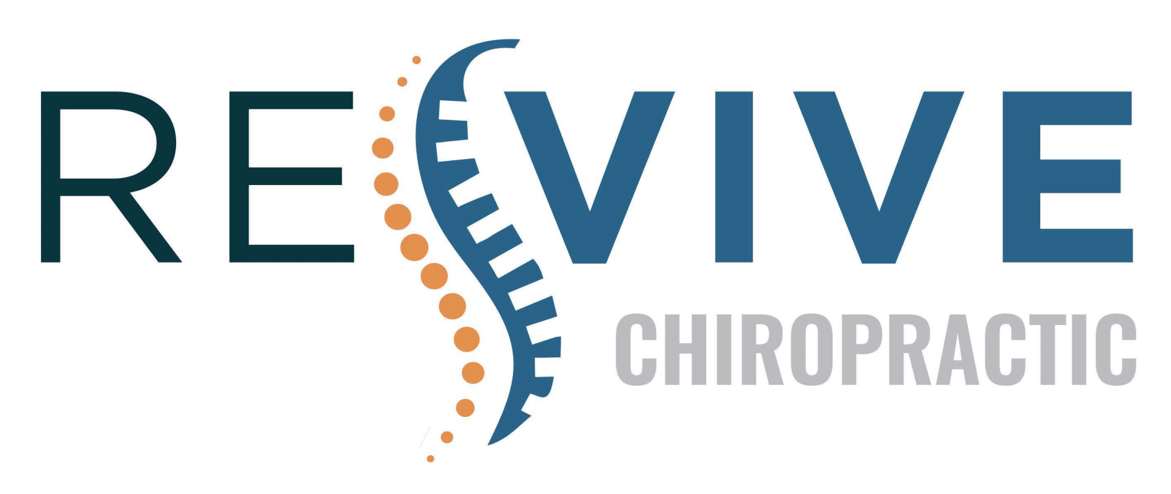If you're looking to improve your mobility and flexibility, there are several effective strategies you can implement in your daily routine. By prioritizing dynamic stretching and incorporating strength training, you'll lay a solid foundation for enhanced movement. Exploring practices like yoga and foam rolling can further help alleviate tension and promote recovery. Don't underestimate the power of hydration and mindful breathing; these elements can greatly impact your performance. But before you start, consider how setting clear mobility goals can transform your approach to fitness and well-being. Here's what you should know next.
Prioritize Dynamic Stretching
Dynamic stretching should be an essential part of your warm-up routine, especially if you want to boost your mobility and flexibility. Unlike static stretching, which involves holding a position, dynamic stretching focuses on controlled movements that take your muscles and joints through their full range of motion. This approach helps increase blood flow and prepares your body for more intense activity.
To get started, think about incorporating movements that mimic the exercises or sports you'll be doing. For instance, if you're preparing for a run, include leg swings, walking lunges, and high knees. These exercises not only warm up your muscles but also activate your nervous system, enhancing overall performance.
Aim for at least 5 to 10 minutes of dynamic stretching before your main workout. You'll want to target all major muscle groups, ensuring that your upper and lower body are engaged. Pay attention to how your body feels during these movements; if something feels tight, spend a bit more time on that area.
Incorporating dynamic stretches into your routine can greatly reduce the risk of injury. When your muscles are warm and your joints are mobile, they're less likely to be strained during your workout.
Plus, you'll notice an improvement in your overall flexibility, allowing you to move more freely and efficiently. So, don't skip this vital step; prioritize dynamic stretching and feel the difference in your performance.
Incorporate Strength Training
Incorporating strength training into your routine can greatly improve your muscle endurance and enhance joint stability.
By focusing on balanced strength, you'll not only boost your overall performance but also reduce the risk of injury.
Let's explore how you can effectively add strength training to your mobility and flexibility regimen.
Improve Muscle Endurance
Strength training is a powerful tool for improving muscle endurance, allowing you to perform daily activities with greater ease and efficiency. By incorporating strength training into your routine, you can increase your muscles' ability to sustain prolonged activity, which is essential for both athletic performance and everyday tasks.
To get started, focus on exercises that target major muscle groups, such as squats, lunges, push-ups, and rows. Aim for higher repetitions with moderate weights, as this approach enhances endurance without overly taxing your muscles.
It's also important to maintain proper form; quality over quantity will yield better results and reduce the risk of injury.
Incorporate strength training at least two to three times a week, allowing adequate rest days between sessions to give your muscles time to recover. Gradually increase the weight or resistance as you get stronger, ensuring continuous improvement.
Don't forget to balance your strength training with cardiovascular exercises, which also contribute to overall endurance.
Enhance Joint Stability
Building on your strength training regimen not only enhances muscle endurance but also plays an essential role in improving joint stability. When you strengthen the muscles around your joints, you provide better support and reduce the risk of injury.
Focus on exercises that target key muscle groups, such as your quadriceps, hamstrings, glutes, and core. These areas are vital for stabilizing your knees, hips, and spine.
Incorporate movements like squats, lunges, and deadlifts into your routine. Not only do these exercises build strength, but they also promote proper joint alignment.
Don't forget about balance training; adding exercises like single-leg stands can further enhance stability.
Aim for two to three strength training sessions per week, ensuring you give your muscles time to recover. As you progress, consider increasing the weight or resistance to continue challenging your muscles.
Remember to always prioritize good form to avoid unnecessary strain on your joints.
Promote Balanced Strength
Balanced strength is essential for overall fitness and injury prevention, and it can be achieved through a well-rounded strength training program. By incorporating exercises that target all major muscle groups, you'll guarantee that your body remains strong and stable. This balance helps prevent overuse injuries often caused by focusing too much on one area.
Start with compound movements like squats, deadlifts, and bench presses, as they engage multiple muscle groups at once. You should also include isolation exercises, such as bicep curls and tricep extensions, to fine-tune your strength in specific areas. Aim for at least two to three strength training sessions per week, allowing for rest days in between to let your muscles recover.
Don't forget about the importance of core strength! A strong core supports your entire body and enhances your balance. Incorporate planks, bridges, and rotational movements to strengthen your core effectively.
Finally, keep track of your progress and adjust your workouts as needed. By promoting balanced strength, you'll not only improve your mobility and flexibility but also boost your overall fitness and reduce the risk of injuries.
Practice Regular Yoga
Embracing the practice of regular yoga can greatly enhance your mobility and flexibility. Yoga combines physical postures, breath control, and mindfulness, creating a holistic approach to improving your body's range of motion. By consistently engaging in yoga, you'll find that your muscles become more pliable, and your joints experience less stiffness.
To reap the benefits, try to set aside time each week for your practice. Even a short daily session can yield remarkable results. Start with basic poses like Downward Dog, Cat-Cow, and Child's Pose. These foundational stretches help open up your hips, shoulders, and spine, which are vital areas for mobility.
As you progress, don't hesitate to explore different styles of yoga. Hatha and Vinyasa are excellent for beginners, while Yin and Restorative yoga can deepen your flexibility work. Pay attention to how your body responds to each style, and adjust accordingly to suit your needs.
Consistency is key, so find a routine that works for you and stick with it. In addition to improving flexibility, yoga can also enhance your balance and strength. This integrated approach not only prepares your body for daily activities but also aids in injury prevention.
Remember to listen to your body and respect its limits. With regular practice, you'll likely notice significant improvements in your overall mobility, allowing you to enjoy physical activities with greater ease and less discomfort. So, roll out your mat and start your journey toward enhanced mobility today!
Utilize Foam Rolling
Foam rolling can be a game-changer for your mobility and flexibility.
It helps relieve muscle tension, improve blood flow, and enhance recovery after workouts.
Let's explore some effective techniques to get the most out of your foam rolling routine.
Benefits of Foam Rolling
When you think of effective recovery tools, foam rolling often comes to mind. This simple yet powerful technique can greatly enhance your mobility and flexibility. By using a foam roller, you're able to release muscle tension and improve blood flow, which aids in recovery after workouts.
Foam rolling targets tight muscles, breaking up knots and fascia adhesions. When you roll over these areas, you stimulate your muscles and connective tissue, helping them relax. This not only reduces soreness but can also enhance your overall performance during activities.
Moreover, regular foam rolling can increase your range of motion. When your muscles are less tight, you'll notice improved flexibility, making it easier to perform exercises and daily activities.
Plus, foam rolling can serve as a great warm-up tool, prepping your muscles for movement.
Incorporating foam rolling into your routine can also help prevent injuries by addressing muscle imbalances and promoting alignment. You'll feel more agile and ready to tackle your workouts.
Techniques for Effective Use
To maximize the benefits of foam rolling, it's important to use the right techniques. When done correctly, foam rolling can greatly enhance your mobility and flexibility.
Here are some key techniques to keep in mind:
- Start Slow: Begin by slowly rolling over each muscle group. This helps you identify tight areas and prevents injury.
- Maintain Pressure: Apply consistent pressure on tight spots, but don't overdo it. If you feel pain, ease off a bit.
- Target Specific Areas: Focus on larger muscle groups like your quads, hamstrings, and back. Spend more time on areas that feel particularly tight or sore.
- Incorporate Movement: While rolling, try to incorporate gentle movements, like bending your knees or rotating your hips. This can help release tension more effectively.
Maintain Proper Hydration
Staying properly hydrated is vital for maintaining your mobility and flexibility. When your body is well-hydrated, your muscles function effectively, and your joints stay lubricated, reducing the risk of stiffness and discomfort. Dehydration can lead to muscle cramps and fatigue, making it harder to move freely and perform exercises that enhance your flexibility.
To guarantee you're drinking enough water, aim to consume at least eight 8-ounce glasses daily, but remember that individual needs can vary based on factors like activity level, climate, and overall health. A simple way to track your hydration is to carry a water bottle with you throughout the day. This keeps water accessible and serves as a reminder to sip regularly.
It's important to pay attention to your body's signals. If you're feeling thirsty, that's a clear indication you need to drink more. Additionally, monitor your urine color; pale yellow typically indicates good hydration, while dark yellow suggests you should increase your fluid intake.
Consider incorporating hydrating foods into your diet as well. Fruits and vegetables, such as watermelon, cucumbers, and oranges, not only provide essential nutrients but also contribute to your overall hydration.
If you're exercising or spending time in the heat, increase your water intake to replenish lost fluids.
Focus on Breathing Techniques
Your breath plays an essential role in enhancing mobility and flexibility. When you focus on your breathing, you can improve your body's overall function and performance. Proper breathing techniques help you release tension, increase oxygen flow, and promote relaxation, which are all crucial for flexibility.
Here are some techniques to incorporate:
- Diaphragmatic Breathing: Breathe deeply into your diaphragm rather than your chest. This technique helps engage your core and promotes relaxation, which is fundamental when you're stretching.
- Slow, Controlled Inhales and Exhales: Instead of rapid, shallow breaths, take slow and controlled inhales and exhales. This approach calms your nervous system and improves your focus, helping you stretch more effectively.
- Sync Breathing with Movement: Coordinate your breath with your movements. For instance, inhale as you prepare to stretch and exhale as you deepen the stretch. This rhythm can enhance your range of motion and prevent injury.
- Practice Mindful Breathing: Set aside time to focus solely on your breath. Mindful breathing not only helps improve lung capacity but also allows you to tune into your body's signals, leading to more effective mobility exercises.
Set Consistent Mobility Goals
Regularly setting consistent mobility goals can greatly enhance your flexibility and overall movement quality. When you establish clear objectives, you create a roadmap that guides your practice and keeps you motivated. Start by evaluating your current mobility levels. Identify areas where you struggle and choose specific goals to address those limitations. For instance, you might aim to improve your hip flexor flexibility or enhance your shoulder range of motion.
Once you've pinpointed your goals, break them down into smaller, achievable milestones. This approach not only makes your goals feel less intimidating but also provides you with a sense of accomplishment along the way. For instance, if your primary goal is to perform a deeper squat, set milestones like increasing your squat depth by an inch each week or incorporating specific stretching routines into your daily schedule.
Consistency is key. Set aside dedicated time each week to work on your mobility goals. Whether it's through dynamic stretching, yoga, or foam rolling, make it a non-negotiable part of your routine. Track your progress, and don't hesitate to adjust your goals as you improve. Celebrate your achievements, no matter how small, as this will keep you engaged and motivated.
Lastly, remember to stay patient. Mobility improvements take time, but with consistent effort, you'll notice significant changes in your flexibility and overall movement quality. By setting and sticking to your mobility goals, you'll pave the way for a more active and fulfilling lifestyle.
Conclusion
By prioritizing dynamic stretching, incorporating strength training, and practicing regular yoga, you can greatly enhance your mobility and flexibility. Don't forget to utilize foam rolling, stay hydrated, and focus on your breathing techniques. Setting consistent mobility goals will keep you motivated and on track. Remember, it's all about making small, achievable changes that lead to lasting improvements. Embrace these tips, and you'll feel more agile and flexible in no time!



